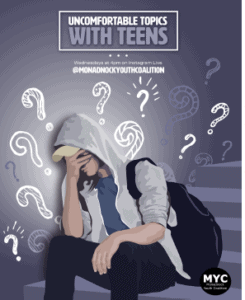Mental Health Awareness Month
What exactly is Mental Health Awareness Month, and where did it come from? Learn all about how May became a month for mental health awareness here!
- Written on: May 1, 2024
- Writen By: Kristle Sylvester and Lilliana Riopel
To learn about the history of Mental Health Awareness Month, we must first learn about the founder of Mental Health America, Clifford Whittingham Beers. Suffering from depression and “paranoia” (later seen as Bipolar Disorder), Beers both witnessed and experienced the abuse of staff from mental institutions first hand. Beers graduated from Yale University and, in 1908, wrote the autobiography “A Mind That Found Itself” based on these accounts.
After his book became a bestseller, Beers went on to create the “Connecticut Society for Mental Hygiene,” now known as Mental Health Connecticut. And in 1909, he founded the “National Committee for Mental Hygiene” which is now Mental Health America. The goals of MHA were – and still are – to improve attitudes and services for people with mental health conditions, and to promote mental health. In 1949, Mental Health Awareness Month was created (after Beers had already passed away).
Mental Health America created Mental Health Awareness Month to increase awareness of the importance of mental health and, every May, they provide tips, tools and resources for other organizations to share, as well. There are now many organizations that take part in spreading awareness and having mental health events, such as the National Institute of Mental Health, American Psychiatric Association, American Hospital Association, as well as the National Alliance on Mental Illness.
The National Alliance on Mental Illness has dedicated itself to creating a safe and inclusive space for anything that is or has been confronted with mental health illness. NAMI has many resources including a help line for adults and one for teens and young adults. NAMI participates in this movement to change and reduce the stigma around mental health. They also aim to provide resources and education to the public to continue to reduce stigma.
Another organization that takes part is the Substance Abuse and Mental Health Services Administration (SAMHSA). When discussing mental health, it is also important to touch on how mental health and substance abuse correlate. When someone is struggling with both a mental illness and substance abuse, it is referred to as a co-occurring disorder or dual diagnosis.
People can suffer from co-occurring disorders for several reasons, such as using substances that can lead to mental health symptoms, using substances to cope with mental health challenges, such as depression and anxiety, the make-up of the brain, trauma, and/or stress. Using substances to cope with uncomfortable memories, feelings, or thoughts, a noticeable relationship between substance use and mental health, and experiencing more mental health symptoms when not using substances are all indictors of a co-occurring disorder.
If you or someone you know may be suffering from mental health challenges, or may have a co-occurring disorder, there are resources out there that want to help. Here are a few of the many organizations you can reach out to –
NAMI Helpline – 1-800-950-6264
NAMI Teen and Young Adult Helpline – 1-800-950-6264
SAMHSA Helpline – Call or text 988
More Posts You Might be Interested in:
We hope you found this article helpful
For more resources and helpful tips, you can follow our Facebook page at https://www.facebook.com/MonadnockYouthCoalition/.





